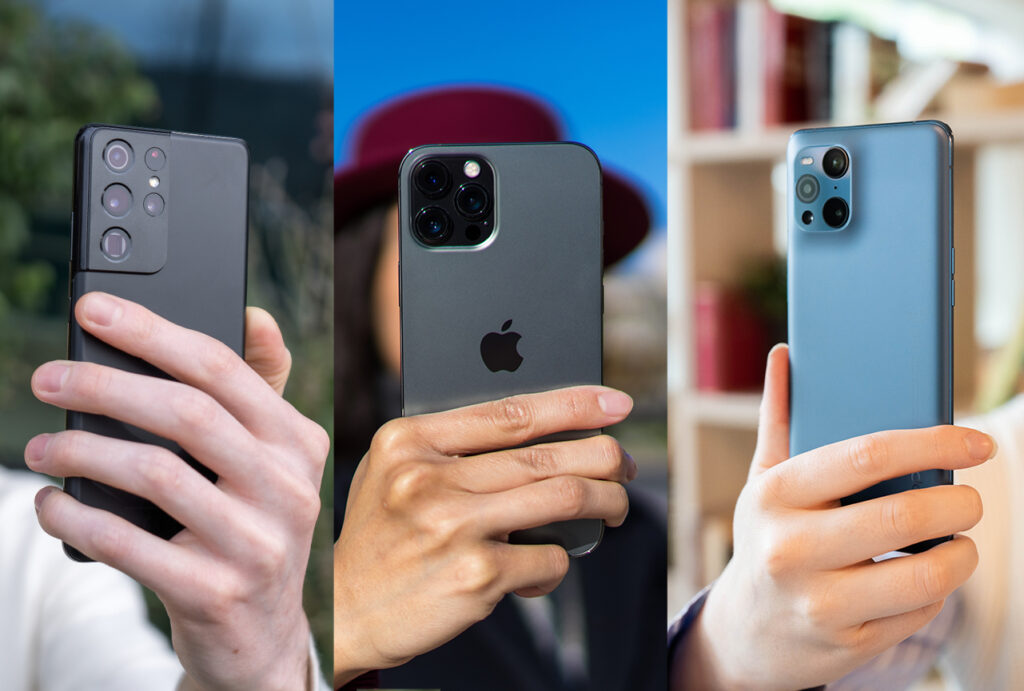Smartphones are here, and they are not going anywhere, not anytime soon. Or never. Described as the ultimate “attention-robbers,” the gadgets in our hands are taking over and changing drastically how we interact. Leading the fray is youth, who to them, a few hours spend without their phones is near suicidal.
Top on the list of priorities for most, if not all ‘up-town’ youth segments, is the irreplaceable value apportioned to their phones. In fact, the surest way to come in between a young person’s peace of mind today is to deny them access to smartphones and the internet.
Concerns have been raised in some quarters about the growing unhealthy dependence on these handy gadgets, that come in different makes, shapes, and features. Some opine that productivity has greatly been hampered especially in activities that do not involve smartphones, concentration in lecture halls is wanting, in-person social interactions are unbearable and apparently boring, accidents on the roads and even bumping into each other on the streets has been occasioned, attention spans have become shifty and a myriad of other mentally unhealthy habits.

Yet the users, majorly the youth have thought differently. They feel the level of connectedness has increased, their sense of belonging affirmed, they are more abreast with happenings around them, and generally, they are getting all their young lives’ needs straight from their gadgets. Thus, they are hammering the keys like no one’s business.
Ultimately, the aspect of missing out has been one of the defining factors that have driven the youth to these gadgets and phone manufacturers are cashing out. FOMO (Fear of Missing Out) is a palpable issue, and the youth just can’t afford to be behind on what’s trending.
Yet in all this, there has been one casualty; time. The gadgets have definitely changed how we allocate time, how we use the time, and how we make every second count. All these point towards a serious shift in behavioral and social interactions, especially because a smartphone can easily subsume a wide range of integrated technologies, that ride on a whole lot of applications that all demand time from the user. Now we can make calls, respond to emails, play games, send and receive money, chat with friends and family both far and near, schedule meetings, earn straight from the phones, attend classes online, or generally be entertained.
The time factor is such a huge issue that a recent study found that there is less satisfaction in individuals who used smartphones while interacting physically with friends and had a huge negative effect on face-to-face interactions.

But is it all gloom and doom? What does the Kenyan youth think about this and what do they feel are the effects of smartphones on the quality of time spent interacting with friends and family?
In our continuous endeavor to unearth youth trends in Kenya, we sort to answer this and other smartphone usage-related questions, and the insights are interesting.
The empirical analysis was based on data collected from our qualitative and quantitative approaches from a study conducted between 31st July and 7th of August this year. It is important to point out that this was a study based on a small sample, but was representative and had participants from diverse parts of the country.
The data set had respondent details such as age, place of residence, and gender.



The qualitative phase was from our tailor-made youth platform, through our affiliate partner, Young and Free; the Movement, that brings together young people from across the country, to an online weekly discussion. The quantitative stage had data derived from online participation, through self-completion of the study tool that was randomly shared to avoid data biases.
The study tool was scripted on an online data collection platform, which also allowed for anonymity and confidentiality of the data collected. Below are the key highlights from the study.
First, we sort to gauge the awareness of smartphone brands among the youth. Samsung and iPhone both were first mentioned at 33%, with Huawei coming in third at 15%. Other smartphones that received the top of mind mention were:
- Infinix
- Blackberry
- Nokia
- Tecno
- Oppo

On the aspect of usage, the dynamics changed quite considerably for the first mentions. Huawei topped in usage among the youth at 24%, Samsung at 16%, and Tecno at 13%. In order of incidental usage, the following smartphones were mentioned:
- Nokia
- Infinix
- Iphone
- LG
- Oppo
- HTC
- Tesla
- Wiko
- Neon Nova
- Neon Kicka
- Blackberry

We wanted to understand why the variance in awareness and usage and approached this from a cost perspective. Thus, when asked if the cost wasn’t an issue in purchase power, the participants ranked iPhone as their go-to dream phone at 48%, Samsung at 17%, and Blackberry at 10%. The rest of the brands shared the remainder of the pie.

We also probed on what the youth use their phones for apart from communication, which is a primary use of smartphones. Researching online and attending online classes was top on the list at 21% each. Probably as a result of the closure of learning institutions, these two uses were favorably mentioned. Other uses for smartphone usage were;
- Photography-10%
- Sending mails
- Listening and watching music and movies
- Being updated on current affairs
- Money transfer
- Digital marketing
- Litening to radio

Important to note is that most smartphone manufacturers have abandoned the radio functionality, probably as a result of waning interest from the majority of the users. The radio listenership here, therefore, was extrapolated as purely online.
Still, on cost, we prompted them to tell us how much they would spend on a phone, all factors considered. A majority, 45% opined that Ksh.10,000-Ksh. 20,000 was an ideal price tag, 29% thought Ksh. 21,000-Ksh. 30,000 was an okay price while 14% were fine with paying Ksh. 40,000 and above with a capping of Ksh. 90,000.
So, what would the youth be looking for in a smartphone of their choice? The main factors that stood out were the RAM and the internal storage at 38% each. With phone manufactures creating gadgets that have external expandable storage space and cloud storage also being an option, the participants still insisted that it was important for them for a phone to have sizable internal storage, without necessarily occasioning need for a memory slot that would still impact on cost.
Other important factors were:
- Camera at 28%
- Cost
- Features or the functionality of the phone
- Stylishness
- Durability
- Battery life
- Brand

Finally, we piqued their minds on their general thoughts on the importance or effects of smartphones on the quality of conversations and their opinions were as diverse, as they were intriguing.
An interesting observation was that smartphones have eroded oral speech, leaving most youth unable to verbally construct and communicate cogently. The fact that all smartphones come with predictive text features has left mastery of language in limbo, with most opting to even come up with short forms of would-be legit, grammatically correct, long prose. This has led to unintelligibility, fueled by words such as “SMH, OMG, TGIF, LMAO, ROFL,” and other ‘lingual concoctions.’
Hyped as the surest way to reach people from afar and keep distant relations, smartphones were as well thought to have simplified the perennial complex way of life. That we can now even make money online, follow our favorite celebrities, know what’s happening in other parts of the world, hold virtual impactful meetings, attend class, church, and even online music concerts and youth events, the smartphones outrightly carried the day, opinion-wise. And yes, during this period of social distancing, it would be unimaginable to live in a world without phones.
“In social gatherings, people are busy on their phones, browsing, chatting, listening to music and such like stuff. Having one on one conversations is becoming a thing of the past.”
Conclusion
Smartphones and the youth are jolly bedfellows. Their separation is inconceivable and their fates intertwined. And while the art of conversation has greatly changed, the benefits of smartphones cannot be overstated. Yes, they have enabled close relations to appear distant but have also made it possible for distant relationships to come closer. The feelings obviously juxtaposed.
On the backdrop of all these, are smartphone manufacturers. And leading the pack, Apple has continued to wow and woo users with innovative and gripping smartphone technology, that makes most young people aspire to own their devices. With the expected release of the iPhone 12, stakes are high as Huawei and Oppo brands have already unleashed some of their best versions that are as well pocket-friendly while packing amazing features.
The ongoing pandemic has obviously not dampened the spirits of phone manufacturers, even with the reported drop in sales of most smartphones in the first quarter of the year. Samsung has as well set up an array of new releases this year.

As empowering as smartphones are, it seats at a personal purview to determine how this intrusive electronic should affect their life and functionality as a relational human being. We expect to see more and more eye-catching, jaw-dropping pieces of marvel in the name of smartphones. Our lives will definitely be more interrupted and maybe, we will have more done from the comfort of our ‘pocket-mates.’ We therefore think that as an objective, more research would have to be conducted to unravel and understand ways through which we can adapt, change and embrace the fast-paced smartphone technology, without letting go of our central human purpose and frame of being conversational and relational beings.
Acknowledgement

We acknowledge the great and priceless work being advanced by young and visionary youth from the Young and Free; the Movement, the innumerable support they continue giving us, and the focus they have in helping young people get freedom from damaging addictions and mental strain. We are privileged to partner with them in our endeavor to unearth and churn out actionable and insightful youth trends that are vital for organizations and corporates worldwide.
Written and Prepared by Mmayi Andy- Lead, Consumer Insights and Research Division, Foresight Research.


This is a good post